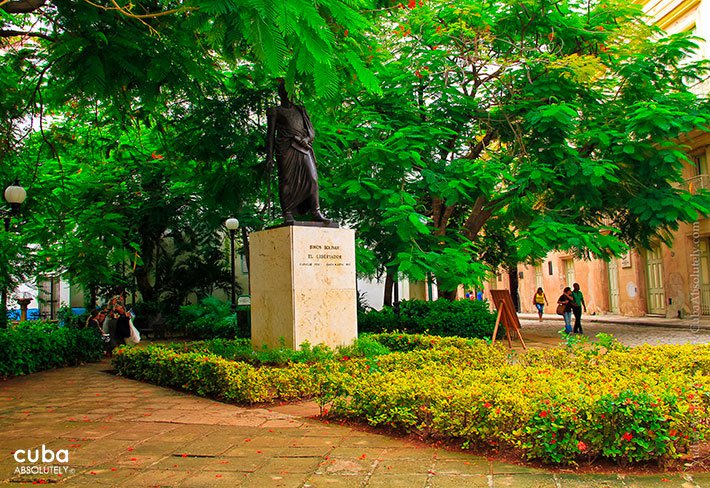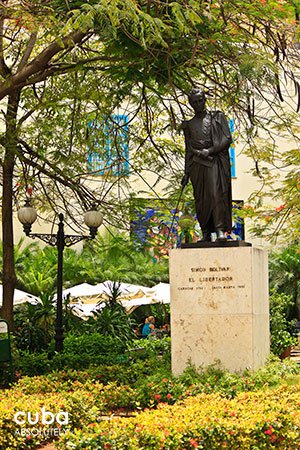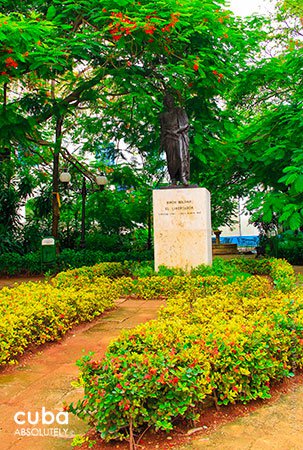North on Mercaderes, you’ll reach Parque Simón Bolívar on the corner of Calle Obrapía. In addition to a statue of the Latin American independence movement leader, the park has a ceramic mural by Venezuelan artist Carmen Montilla.

Acuario Nacional de Cuba LH  4
4
This aquarium is a scientific center that specializes in research and environmental protection awareness and promotion, especially sea plant and animal life. The Acuario Nacional de Cuba opened on Jan …

Museo Palacio de Gobierno – Cámara de Representantes LH  3
3
Immediately south of the Convento de San Francisco de Asís, the squat yet imposing neo-classical building raised atop stairs served as the original Cámara de Representantes—the Republican House of Rep …
 Neo-classicalAdmission: FreeOpen: 9:30am-5:30pm Tues-SunOficios #211 e/ Churruca y Muralla, Habana Vieja
Neo-classicalAdmission: FreeOpen: 9:30am-5:30pm Tues-SunOficios #211 e/ Churruca y Muralla, Habana Vieja 
Fuente de la India or La Noble Habana LH  3
3
This fountain, which is known by either name, is a representation of the mythical Indian woman called Habana, the wife of cacique Habaguanex who ruled in the area before the arrival of Columbus. The f …

Convento e Iglesia de Santa Clara de Asís LH  3
3
The concern of Havana’s best families over the fate of their unmarried daughters led to the construction of this convent, which would eventually become the first nunnery in Cuba. Construction works be …
 ColonialAdmission: FreeCuba #602 e/ Luz y Sol, Habana Vieja
ColonialAdmission: FreeCuba #602 e/ Luz y Sol, Habana Vieja 
Hotel Inglaterra LH  3
3
The original nucleus of the hotel dates back to 1856 and was later expanded in 1891 with the addition of two adjacent properties. The last floor was built in 1915. This is Cuba’s oldest hotel and has …
 EclecticAdmission: NoneROOMS: 83Trocadero 55, entre Prado y Zulueta
EclecticAdmission: NoneROOMS: 83Trocadero 55, entre Prado y Zulueta 
Calle 23 LH  3
3
Calle 23, or 23rd Steet, is a central, busy street in El Vedado district. It begins at the sea and ends in a river, the Almendares. Its first five streets, from Malecón to L Street are known as La Ram …

Droguería Johnson LH  3
3
Tragically, after being beautifully restored by the City Historian’s Office, this pharmacy caught fire on March 16, 2005. Shelves, counters, the façade woodwork, porcelain ornaments and laboratory app …

Hotel Habana Libre LH  3
3
Located on the famous corner of 23 and L streets, the Habana Libre Hotel, with its 25 floors and 630 spacious rooms, stands majestically and offers an incomparable view of the bay. The building occupi …
 ModernL entre 23 y 25
ModernL entre 23 y 25 
Convento e Iglesia del Carmen LH  3
3
In 1923, members of the order of the Carmelites purchased a lot on the corner of Avenida del Presidente Menocal and Neptuno, where first they created a provisional chapel and later erected the majesti …
 EclecticOpen: Lauds: 8am; Vespers: 6:30pmInfanta entre Neptuno y Concordia
EclecticOpen: Lauds: 8am; Vespers: 6:30pmInfanta entre Neptuno y Concordia 
Coche Mambí LH  3
3
Outside the Museo Palacio de Gobierno sits a railway carriage, still on rails at the corner of Callejón Churruca. It originally belonged to the Cuban Railroad Company and beginning in 1902 was used by …



